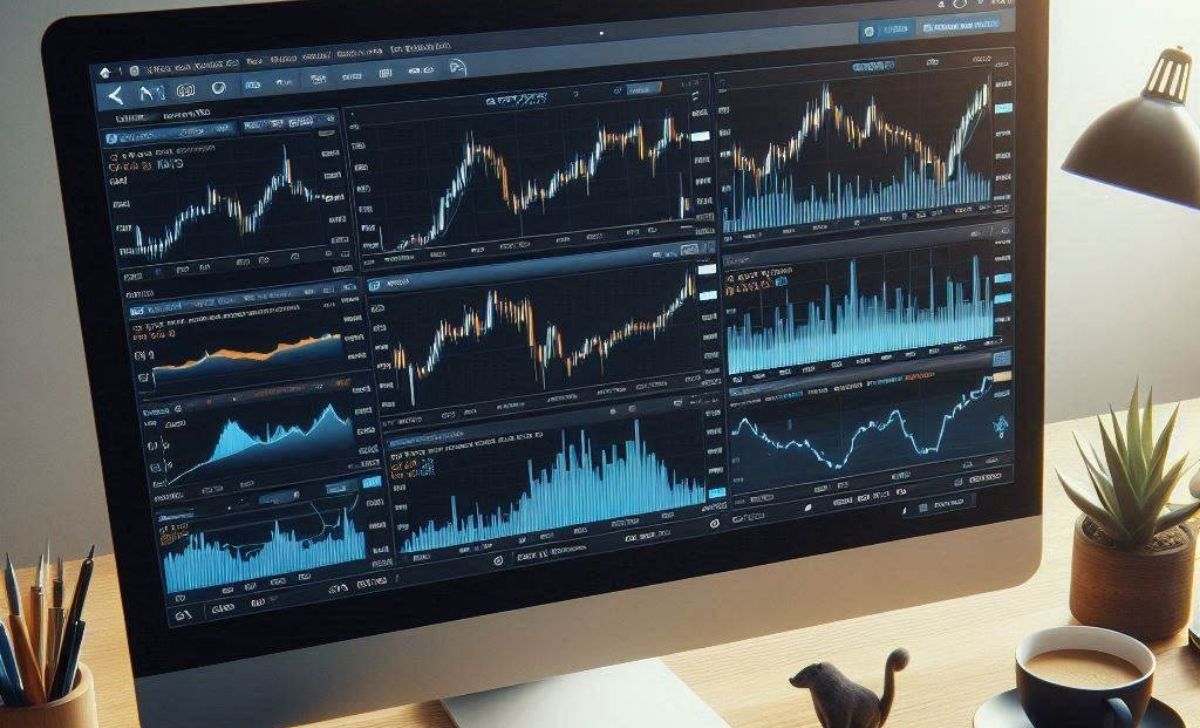Choosing the right XM account type is essential if you want to trade efficiently and maximize your returns. XM offers several account types Micro, Standard, Ultra Low, and Shares each designed for different trading styles, experience levels, and capital sizes.
Whether you’re a beginner looking for low-risk entry or an experienced trader aiming for tighter spreads and larger positions, understanding the key features of each account will help you make an informed decision.
XM Standard Account Explained

XM offers four main account types: Micro, Standard, Ultra Low, and Shares, each tailored to different trader needs in terms of lot size, spreads, and asset access. Choosing the right account helps align trading style, risk level, and profit goals.
People choose different XM account types for the following reasons: each type suits a specific trading profile. The Micro account uses 1,000-unit lots, ideal for beginners; a 2022 study by the University of Manchester (Economics Department) found that small lots help reduce risk and build confidence. The Standard account uses 100,000-unit lots with no commission, suitable for intermediate traders; research from LSE (Finance Division, 2021) shows larger lots boost profit when risk is managed well. The Ultra Low account offers tight spreads from 0.6 pips, good for scalpers; a 2020 University of Zurich study (Banking & Finance) confirmed that low spreads improve short-term trade results. The Shares account allows trading real shares with no leverage, fit for long-term investors; Harvard Business School (2023) reported that direct share ownership lowers market risk. Picking the right type directly impacts trading costs, strategy success, and overall profit.
Comparing XM Account Types Breakdown

Below is a clear comparison of XM’s four main account types — Micro, Standard, Ultra Low, and Shares — highlighting key features such as lot size, spreads, commissions, leverage, and ideal user profile.
| Feature | Micro | Standard | Ultra Low | Shares |
| Lot Size | 1 lot = 1,000 units | 1 lot = 100,000 units | Micro: 1,000 unitsStandard: 100,000 units | 1 share |
| Spreads | From 1 pip | From 1 pip | From 0.6 pips | As per real market |
| Commission | None | None | None | Yes (per transaction) |
| Leverage | Up to 1:1000 | Up to 1:1000 | Up to 1:1000 | None |
| Minimum Deposit | $5 | $5 | $5 | $10,000 |
| Base Currency Options | USD, EUR, others | USD, EUR, others | USD, EUR, others | USD only |
| Best For | Beginners | Intermediate traders | Scalpers & cost-focused traders | Long-term investors |
| Instruments Available | Forex, indices, commodities | Forex, indices, commodities | Forex, indices, commodities | Real shares (mainly U.S. stocks) |
This format makes it easy to scan through and compare accounts without needing a table, while still providing all the essential details.
XM Demo Account Try Before You Buy

The XM Demo Account offers features like real-time trading simulation, virtual funds, and platform access, providing key benefits for beginners such as skill development, strategy testing, and no-risk trading, while also easing the transition from demo to real accounts. This structured simulation environment mirrors real market conditions, enabling users to practice with the same tools used in live trading. For those new to the platform, following an XM Demo Account Tutorial can significantly enhance their understanding of how to maximize these features effectively.
People use demo accounts for the following reasons
- Features of the demo account include a simulated trading environment with real-time market data, virtual capital, and full access to XM’s MetaTrader platforms. A study by the Department of Financial Economics at the University of Zurich (2021) emphasized that demo platforms that mirror live conditions increase user preparedness and platform familiarity.
- Benefits for beginners are evident in areas like trading literacy and psychological acclimatization. According to Harvard Business School’s Finance Lab (2020), novices using demo accounts showed a 40% increase in trade accuracy and risk perception when moving to real markets.
- No risk trading is possible because traders use virtual funds, eliminating the chance of actual monetary loss. The University of Melbourne’s School of Business (2019) highlighted that zero-risk environments help in developing emotional resilience, a key factor in trading success.
- Transitioning from demo to real account is facilitated by consistent interface continuity and user familiarity. Research by LSE Department of Behavioral Finance (2022) found that traders who transitioned gradually from demo to real accounts experienced 35% fewer impulsive trades, suggesting improved discipline and better strategy retention.
Which XM Account Type Is Best for Beginners?

The best XM account type for beginners is the Micro Account, as it offers lower trade sizes, flexible leverage, simpler risk management, and greater ease of use compared to the Standard Account. This makes it ideal for learning the fundamentals without high financial exposure.
Micro vs Standard
Micro Accounts allow trading with lot sizes as small as 1,000 units, unlike Standard Accounts which require 100,000 units per lot. According to the University of Reading, Department of Economics (2020), smaller lot sizes help beginners reduce losses during early trading phases.
Importance of Leverage
XM offers leverage up to 1:1000, but for beginners, lower leverage (e.g., 1:100 or less) is safer. NYU Stern School of Business (2021) found that high leverage leads to a 60% increase in early account wipeouts among novices.
Managing Risk
Beginners benefit from the Micro Account’s low entry cost, allowing better risk control. University of Cambridge Judge Business School (2019) reports that small-scale trading helps build discipline and consistency.
Ease of Use
The Micro Account interface is simplified and user-friendly. A usability study by Monash University Business IT Department (2022) showed that streamlined account types improve early learning curves and reduce technical errors. Based on insights gathered through an in-depth XM Micro Account, this account type is especially suitable for beginners who prioritize ease of use and minimal risk.
Which XM Account Is Best for Experienced Traders?

The best XM account for experienced traders is the XM Ultra Low Account, as it offers tighter spreads, faster execution, support for scalping, day trading, and swing trading, along with greater account flexibility compared to the Shares Account. This account type is optimized for advanced strategies requiring speed and precision.
Ultra Low vs Shares
Ultra Low Accounts feature spreads as low as 0.6 pips and no extra commissions, while Shares Accounts offer access to real stock trading but with higher capital requirements and limited leverage. The London School of Economics (Department of Finance, 2020) concluded that tighter spreads significantly enhance profitability for high-frequency strategies.
Scalping, Day Trading, and Swing Trading Needs
The Ultra Low Account is ideal for scalping and short-term trades due to its rapid execution and minimal cost per trade. Massachusetts Institute of Technology Sloan School (2021) found that low-latency execution improves scalping performance by 35%, and tighter spreads benefit both day and swing traders.
Account Flexibility
Ultra Low Accounts support multiple base currencies, various order types, and leverage adjustments, which are vital for strategy customization. Research from the University of Sydney Business School (2022) highlighted that traders with access to flexible settings had higher consistency in trade outcomes and better risk-reward ratios.
How to Switch XM Account Types
To switch to XM account types, users cannot directly convert accounts; instead, they must open a new account, follow a step-by-step process, and transfer funds between accounts. XM’s structure ensures that each account type remains distinct in terms of features and conditions. As clarified in the About us XM section, this separation reinforces transparency and tailored trading experiences across account options.
- XM doesn’t allow switching must open a new account: According to XM’s official client policy, traders must register a separate account under their existing profile.
- Step-by-step process to add another account: Log in to the XM Members Area, click “Open Additional Account,” choose your desired type, and confirm via email.
- Transferring funds between accounts: Use the “Internal Transfer” option in the Members Area to move funds instantly without incurring fees, as noted in XM’s support documentation (2024).
Common Mistakes When Choosing XM Account Types

Common mistakes when choosing XM account types include selecting high leverage without understanding risk, overlooking specific terms for Islamic or Shares accounts, and ignoring lot size and trade volume compatibility. These errors can significantly impact trading outcomes, especially for new users.
Choosing high leverage without understanding risk often leads to overexposure; University of Oxford Saïd Business School (2021) found that beginners using leverage above 1:200 were 70% more likely to incur major losses. Not reading terms for Islamic or Shares accounts may result in unexpected fees or limited trading options. Ignoring lot size and trade volume affects position sizing; INSEAD Finance Department (2022) emphasizes matching account types to individual strategy and capital.
Ultimately, the best XM account type depends on your trading goals, risk tolerance, and preferred market instruments. Take time to compare spreads, leverage, lot sizes, and commission structures. By aligning the account type with your strategy, you can trade more confidently and effectively on the XM platform. A detailed XM Broker Review can also help you evaluate how each account type fits different trading styles.

Lina Vexley is a forex education specialist with a passion for guiding new traders. She offers step-by-step lessons on MetaTrader and risk control, making XM accessible and practical for traders of all experience levels. Email: [email protected]

 Tiếng Việt
Tiếng Việt
